Meeting the basic standards is no longer enough
While the fundamentals of serving guests haven’t changed, consistently delivering extraordinary customer experiences has become much more complicated for hotels in recent years. It’s no longer enough to ensure that basic standards are met; ensuring extraordinary customer experiences requires more planning, preparation, and coordination.
With this in mind, we need to consider the organization’s culture and the service ethos that everyone embraces and ensure that even the brand identity developed for external guests is consistent with the service they receive.
Combining all these elements will ensure an extraordinary customer experience. Is it flawlessly delivered every day to every guest? This question underscores the need to continuously improve the customer experience so that team members always deliver the best.
Datapoints to consider

Travel behavior has changed. J.D. Power’s July 2024 report found that guests are taking fewer trips and staying longer at their destination. With more nights at a hotel, guests expect more, including increased employee interactions.
At the same time, Gallup’s 2024 State of the Global Workplace report indicates that employees are dealing with high levels of stress at work. This leads to lower productivity, more frequent accidents, and general malaise among team members. Our team members are struggling at a time when customers are expecting staff to deliver more.
What is the solution?
Extraordinary customer experiences are not a coincidence. They are a result of the organization’s senior leaders nurturing and championing a culture of service excellence. This culture, which embodies ‘the way things are done around here,’ influences every interaction with team members, from the doorman’s welcome to the accounting department’s resolution of a room folio dispute. Senior leaders are integral to this process. In addition to developing the organization’s vision, values and acceptable behavior, they must empower their team to deliver exceptional service.
A healthy workplace environment in which team members feel valued and recognized for their work leads them to become more engaged in the business. They often care more and put in a greater effort. Strong team member engagement means customers have a better experience. They spend more, return more often and recommend the service or company to their friends.
Ensuring a high level of service isn’t accomplished with a one-week training course from an off-the-shelf binder of service standards. Moving the needle and making a systemic change is more complex. It’s about creating a hotel-wide service excellence ethos. Leaders at every level need to walk the talk and model the behavior they want to establish, encourage and sustain among team members throughout the hotel’s lifetime.
Because every hotel is unique, the service culture must also reflect this differentiation. Consider such questions as
- How has marketing defined the hotel’s identity? For example, if the messaging promises a hip and happening ambiance, the service delivery should reflect this vibe when team members interact with guests.
- What are the local or regional nuances that impact the guest’s expectations of service? In Newfoundland’s folksy environment, authentic service means treating guests as a family member, including inviting them to a local ‘boil-up’ in a backyard shed.
- How does the hotel design influence the service atmosphere and expectations? Traditional décor, such as ornate English furnishings with chintz-covered sofas, suggests a more formal service delivery.
Refocusing on the organization’s culture through the lens of service excellence will benefit the customer, the team members and the hotel’s bottom line.

What’s in it for me?
Changing team member behavior involves examining motivation, providing guidance on the right way to do things, correcting slip-ups and encouraging through rewards and incentives. Done correctly, this provides the foundation and environment for team members to make the best choices during multiple customer interactions. On a personal level, team members often experience monetary benefits when guests receive extraordinary service.
Positive experiences for team members and customers improve a company’s revenue and profit. Good Company found that organizations with disengaged employees saw a 33% decline in operating income. Similarly, Harvard Business Review published an article called “Putting the Service-Profit Chain to Work,” which reported that happy customers, as measured by loyalty, led to a profitability increase of up to 85 percent.
Creating extraordinary service experiences for every guest is not a ‘one and done’ training program but a systematic review, reflection and integration process. It requires relentless commitment from leaders who must model it in everything they do, even when they think no one is looking. Team members will thank you for making their jobs easier, and your customers will reward you with their loyalty by opening their wallets more often.
When was the last time you reviewed your customer experience program?
A Wise Person Once Said…
“If we don’t take care of our customers, someone else will.” – Edgar Mitchell
“Do what you do so well that customers will want to see it again and bring their friends.” – Walt Disney
“It takes months to find a customer…it takes seconds to lose them.” ¬– Vince Lombardi
Jo-Anne Hill, ISHC, is the founder of JH Hospitality Consulting, which leads hotels to revenue and profitability by creating a culture of service excellence. During her hospitality career, she has worked for The Ritz-Carlton Hotel Company, Four Seasons Hotels & Resorts, Mandarin-Oriental Hotel Group, Dorchester Collection, and Shangri-La Hotels & Resorts.


